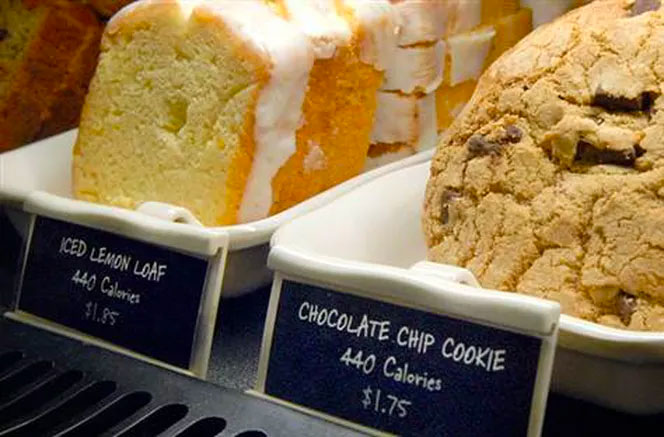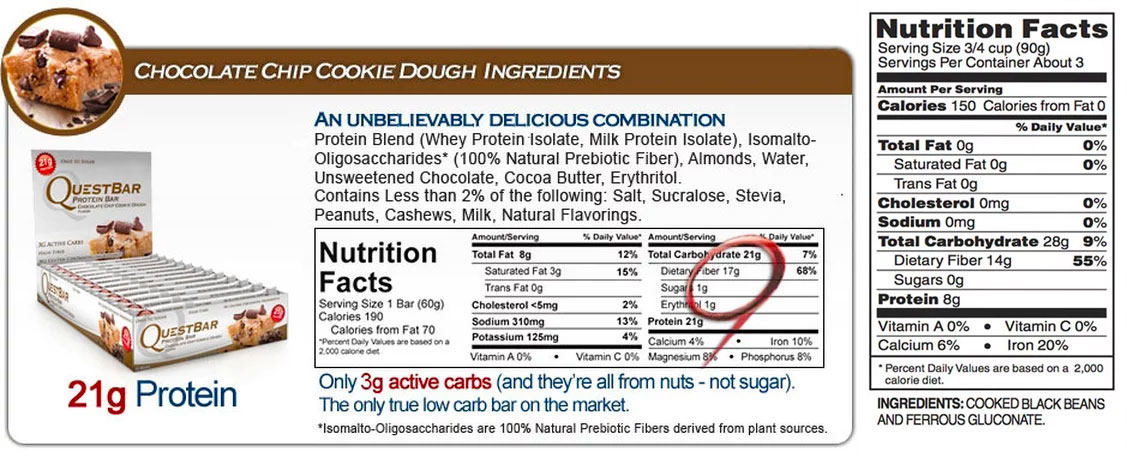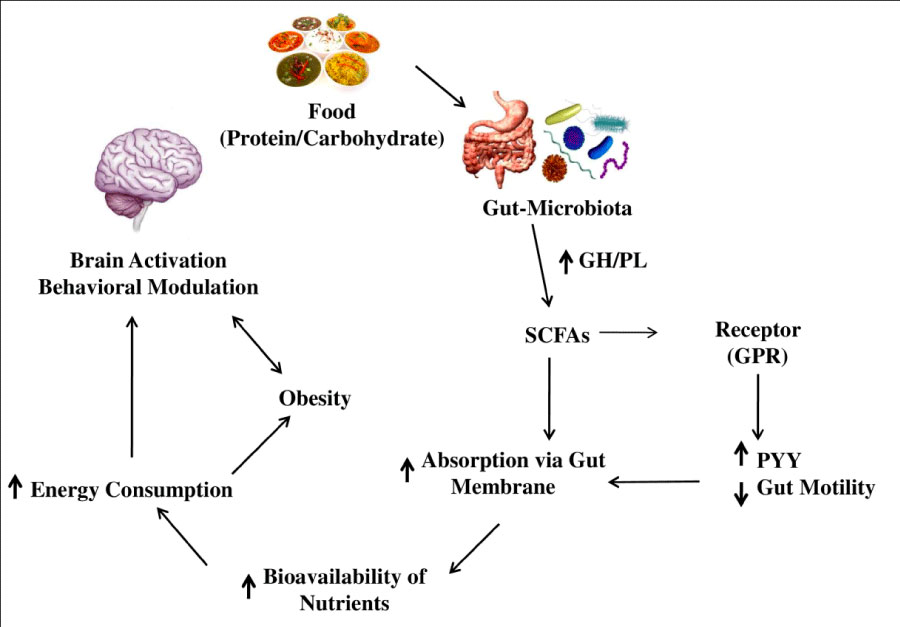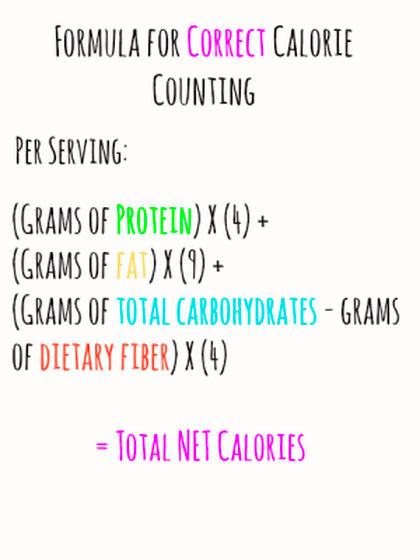Calories count, but counting them is catastrophic.
I know because I’ve tried.
The math has so many sources of error that most attempts at caloric bookkeeping are fruitless. This is often why the best way to count calories is to not count them at all.
Here are just a few things no one tells you about counting calories:
- Nutrition labels can be inaccurate.
- Grams of fat, carbohydrate, and protein are rounded to the near 1/2 gram leading calories counts that don’t add up.
- Serving sizes can be ambiguous (e.g. “about 3 per box.”)
- Cooking changes the number of calories available in a food.
- Your microbiome influences how many calories your body can digest and absorb.
All of this plus more creates one big calorie counting conundrum.


I know this is bad news.
Sorry.
As a nation struggling for better health, calories are everywhere. Walk into Starbucks and see that 440 calorie scone staring at you from behind the glass. Go to dinner at Cheesecake Factory and order off the Skinnylicious menu with items of 590 calories or less. Watching football at home, and you’re surrounded by food advertisements.
You can even try Google’s new Im2Calories algorithm to analyze a still photo of food and estimate how many calories are on the plate.


Yes, your body has a daily energy requirement, and eating less than that amount is necessary for weight loss.
But we are led to believe that if we just add up all the calories in our food and subtract this number from our daily energy requirements, we will have done our nutritional due diligence.
Wrong.
Here is why the best way to count calories is not such a simple task:
1. Calories Contained In Food Don’t Necessarily Equal Calories Used By Your Body.
Calories are measured by a device called a bomb calorimeter. This device determines the amount of energy stored in food by burning it into ash.
However, human digestion and metabolism are much more complex than combustion that takes place inside a lab. Your body does not completely burn food into ash. (Take a look in the toilet if you need evidence of this.)
As a result, calorimeters can only tell you the maximum values of energy stored in a particular food. They cannot tell you whether your body can actually extract and utilize all that energy.
Moreover, calories on a nutrition label don’t account for the calories burned when eating that food. The calorific cost of digesting food varies for different macronutrients.
For example, highly processed or refined foods tend to be easy to digest, allowing your body to use their energy (i.e. calories) easily.
In contrast, foods that are high in protein or fiber require more energy to digest. Your body has to spend energy to get energy, so the net gain is less than the actual amount of energy available in the food. (This is where the idea of negative calorie foods came from).
In fact, the New York Times did a fun quiz on this exact topic called, The New Logic of Calorie-Counting. Can you determine which of these foods’ reported calorie counts are off due to digestive costs?
Proteins, for instance, can require upwards of 35% of their total calories to digest. This means that 100 calories from chicken may only provide 70 or 80 net calories once the digestive process is complete.
Conversely, 100 calories from gummy bears will provide, well, about 100 calories. This is great if you need an immediate energy source. It is not so good if you’re trying to reduce your calorie intake or control your blood sugar.
Like proteins, foods high in fiber tend to have less usable calories than listed on the label because fiber cannot easily be broken down by the human digestive system. Since these calories are poorly recovered from the food, some companies will subtract dietary fiber from the total calorie count.
For example, the Quest Bar below does not include dietary fiber in the calorie count. If it did, the actual calorie count for one bar would be closer to 240 calories — 20% more than what’s listed.


In contrast, the black bean nutrition label at right does include fibrous carbs. If you subtracted out the 14g of fibrous carbs in the bean, the total calories per serving would be closer to 100, 30% less than what the label says.
The bottom line: labels can be deceiving. You have to read carefully and do the math yourself, which is why the best way to count calories may be bypassing the whole process.
2. Rounding Rules on Product Labels Distort the Accuracy of Calories in Food.
Food manufacturers are allowed by the FDA to round serving sizes to the nearest ½ . Even worse, they can have ambiguous words like “about” X servings per package. Fats, carbs, and proteins can also be rounded the nearest ½ gram, so anything less than 0.5 grams can be listed as 0 on the label.
This loophole has been well documented in terms of trans fats. Products that still contain trace amounts a trans fat, as evidence by partially hydrogenated oil is on the label, still claim to have zero because the serving size is rounded down. (See this NPR story for more info: Trans Fat: When Zero Isn’t Really Zero)


For instance, a food item that contains 0.4g fat, 0.4g carbs, and 0.4g of protein could be labeled as 0 calories, even though it actually contains around 7 calories. Manufactures exploit these labeling laws by altering serving sizes to make items appear less calorific than they actually are.
Take I can’t Believe it’s Not Butter spray as an example.
A serving size is only 0.20 grams which means that all the macronutrients can be rounded down to zero, leaving the illusion of 0 calories per serving.
However, one bottle contains 1130 servings! The primary ingredients after water are soybean oil, olive oil, and sweet cream buttermilk, all of which contain significant calories. The result is a bottle that says 0 calories but may actually contain hundreds (over >700 by my estimations).


While .5g might seem like a small margin of error, such inaccuracies can add up, especially when compounded over many servings throughout the day.
The average person looking to lose weight may only need to reduce their total caloric intake by 10% a day. Yet obtaining that level of accuracy in the calories you consumed is difficult given the above distortions.
What happens if you leave a bite on your plate? Did you account for those calories? Are you meticulous about rounding errors and weighing portion sizes down to the 0.5 gram?
Unless you precisely know your daily energy expenditure (i.e. exactly how many calories you use in 24 hours) and are diligent enough to measure your meals before and after you eat, counting calories is going to be imprecise at best.
3. Cooking Changes the Available Energy and Nutrients From Food.
Generally speaking, cooking food makes digestion easier as heat breaks down some of the molecular bonds in food. This saves our digestive system from working as hard, especially for proteins and starchy foods.
Cooking meat, for example, causes the muscle fibers to loosen and degrade, which increases the surface area exposed to digestive enzymes. This makes it easier to absorb the protein so you get more of what you eat.
As for starchy foods, heat breaks down cell walls, not only making it easier to chew (think raw potato versus a cooked one), but also can improve digestion (perhaps one reason why our caveman ancestors started cooking foods).
While the amount of energy freed up in the cooking process may be small, small changes consistently over time can make a big difference.
Interestingly, some cooking methods can actually decrease the available energy in food by changing the chemical structure from an easily absorbed form to a less digestible one.
For instance, boiling potatoes and then letting them cool by sticking them in the fridge creates something called retrograde resistant starch. (Read a good overview of resistant starch at Marks Daily Apple). The cooking and cooling process changes the chemical structure of the carbs in the potato making them behave more like fiber.
The same effect has been found in rice cooked with oil and then cooled overnight. These resistant starches are not absorbed in the small intestine like other carbs; instead, they travel into the colon where gut bacteria metabolize them as fuel.
This leads us to point #4, and perhaps my favorite, the influence of your gut bacteria in energy balance.
4. The Metabolic Exchanges Occurring Between The Food You Eat And The Bacteria In Your Gut Are So Complex That We Don’t Understand The Math.
The effect of your gut microbiota on every aspect of health from anxiety and depression to sleep to the amount of energy you get from food is only beginning to be uncovered.
We do know that food affects our gut bacteria and gut bacteria affect our metabolism. We also know that lean people generally have different quantities and types of bacteria living in their gut compared to those who are overweight (e.g. more Bacteroidetes than Firmicutes).
Researchers believe this difference in gut bacteria plays a role in how we store fat, balance blood sugar and cholesterol, and respond to hormones that make us feel hungry or full.
There is compelling evidence that the wrong mix of microbes can help set the stage for obesity and diabetes by changing the way foods are digested. In simplest terms, gut microbes can up or down-regulate energy uptake, in part by digesting otherwise indigestible fibers in our diet. This process produces short-chain fatty acids (SCFA) that can directly affect metabolism, hormones, and inflammation.
See the diagram below for an overview of all the downstream effects SCFA has on reducing hunger and promoting weight loss.


Why The Best Way To Count Calories Is To Not Count Them At All
Despite our nascent understanding of how gut bacteria affect the way we absorb and use energy from food, it is clear that the microbiome dramatically alters the energy balance equation. Oversimplified thermodynamic calories-in/calories-out equations cannot account for this complexity.
This conundrum, compounded with the effects of cooking methods, digestive energy expenditure, and rounding inaccuracies in nutrition labels should make you reconsider whether tabulating all the calories listed on food labels is worth the fuss.
Counting calories may be a useful tool for gaining awareness of your food choices, portion sizes, and macronutrient intake. If you have no idea how much energy you’re taking in each day, it’s a good place to start learning what your body needs.
The danger is falling into an oversimplified view of energy intake and expenditure and believing the best way to count calories is to glance at a nutrition label.
Don’t outsource your hunger and appetite awareness to the calorie counting gods—they’re terrible bookkeepers. As Precision Nutrition founder Dr. John Berardi says, “long-term success relies on you developing, and using your inborn signaling systems. Which is why calorie counting, while it sometimes produces results in the short-run, can often backfire in the long-run.”
Take-away message:
Your metabolic response to food isn’t always predictable. The amount of energy your body assimilates may be very different from what the food label says. Don’t put all your faith in the math of calorie counting.
Our bodies are remarkable at balancing our energy intake and expenditure when (and this is a big “when”) we honor our hunger and fullness signals, and (and this is a big “and”) we eliminate artificial junk foods, flavorings, and toxicants that highjack and disrupt our innate signaling process.
Action Steps:
- Clear out highly processed junk from your diet. Then relearn about your innate hunger and fullness signals.
- Nourish your gut bacteria with fibrous veggies and fermented foods. Soluble fiber is especially important for supporting healthy gut ecosystems.
- Consider how cooking methods may affect the energy and nutrients of the foods you eat. Mix both raw and cooked foods into your diet.
- Read nutrition labels carefully, and if you want to count calories, do the math yourself.


Perhaps the best way to count calories is to simply take a breath and smile 🙂
~ Jeff Siegel
I’m Jeff Siegel, a wellness coach and mindfulness teacher, helping people upgrade their habits and improve their health.
Tired of being fat? Download your FREE eBook, The 9 Weight Loss Mistakes and The Radical Ways to Overcome Them.
If you’d like to explore working together, you can schedule a private 20-min consultation call with me.



